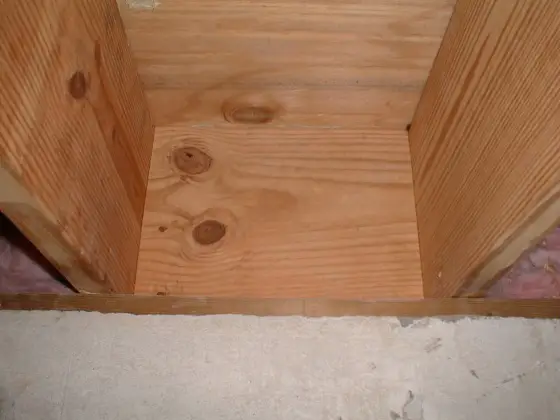Termite

When checking for termites, closely inspect the rim joists around a home and the first two or three feet of floor joist. Use an ice pick or other sharp metal probe to see if the joists are solid.
DEAR TIM: I am interested in buying a home that has a history of termite infestation. The pests were treated by a professional but I am unsure of what type of treatment was done. Is it foolish to buy this house? Are there other tests I should perform before making an offer? Is there a way to permanently eradicate termites from a home? Barry H., Scranton, PA
DEAR BARRY: Many pest control professionals have a saying that I feel is highly accurate - "There are two types of houses. Ones that have had termites and those that will." But there are precautionary measures homeowners can take to hopefully prove the professionals wrong. As for the merits of purchasing the house, I would say that you still need to gather more data before consummating the deal.
Termite Colonies
Termites are a highly intelligent and destructive insect. Each year, new termite colonies form and these along with existing ones cause hundreds of millions of dollars in damage to businesses and homes. Even steel and concrete skyscrapers are not immune. Termites don't discriminate. They will eat the paper on the back of drywall in these buildings as easily as they might eat a wood stud or floor joist in a single family home.
The social system within each colony is impressive. At its center is a queen termite that stays busy laying thousands of eggs. In addition to the queen, colonies have reproductives, soldiers and worker termites. The reproductive termites are the ones that swarm each spring and summer and leave a colony to form a new one. Soldier termites always stick around the nest and defend the colony against invaders. The worker termites are the ones with an appetite.
Termite infestation? Pick the best exterminator using my Termite and Carpenter Ant Checklist. I offer a 100% Money Back Guarantee.
Worker Termites
We all need to worry about the workers. Worker termites travel from the colony through a vast network of underground tunnels and gather food for themselves and all of the other termites who stay back at the colony. The workers forage for food constantly and randomly. They munch on your wood and then take it back to the rest of the colony. The workers are always in search of new food sources. This is a self-preservation mechanism and provides them with wholesome fresh food on a regular basis. Just because termites have visited this home in the past - and may show up again in the future - doesn't mean you should walk away from the deal. If repairs can bring the house back to sound condition, the house may be a good buy.
To determine the condition of the home I would make an offer to purchase contingent upon the inspection of no less than two different individuals. A top quality pest control person can often be hired to inspect for the presence of active or past termite activity. In your case you know that the house has had past activity but a new colony may have formed nearby and possibly defeated any past termiticide treatments. I would also insist on an inspection by a registered professional structural engineer.
This person can assess the structure of the house and tell you if the house needs any repair work. Use the reports generated by these two people to help you arrive at a fair purchase price. The reports may recommend additional termite treatments and structural repairs. It is not uncommon for the purchase price to be reduced by the total sum of these goods and services.
Termite Infestation
There are numerous methods to minimize and eliminate termite infestation. Professional pest control companies can inject traditional barrier chemicals in and around the soil to repel foraging termites. You can also install colony elimination system that actually kill off a colony by slowly killing the worker termites who ingest poisonous bait. This method has become highly popular and over 50 percent of all termite treatments done in the USA today use a colony elimination system.
Not all colony elimination systems are created equal. Some are chemicals that are injected into the ground, some are chemical laden stakes that are driven into the soil and others have monitoring stations that require periodic inspections. Price is generally a great barometer of performance. The more money you spend for a colony elimination system, typically the better it will perform.
Keeping termites away from your home forever may be a daunting task. New colonies form each spring. You need to constantly monitor your home and inspect periodically for infestation. A colony elimination system may kill one colony now but it may need to be permanently maintained to kill future invaders.
Author's Note: We've received other emails with similar problems or questions. Here's one from Aaron S. of Los Angeles, CA, regarding termite fumigation.
"My house was fumigated for termites covered with a tent etc. After removing the tent two days later, we entered our house but there was no odor of gas at all. A while later, we saw insects, spiders, roaches etc. moving around. The fumigation company claims that they mix a substance with the gas so that it will not have an odor. My question: Shouldn't there be a gas odor and dead insects? We can't see the termites inside the wall, but we feel that if all the insects are still alive, probably the termites are not dead either. Please, let us hear you opinion. Thank you very much!"
Doing a little online checking, the chemical used during termite fumigation is targeting only termites. It will not kill spiders, ants, bed bugs or cockroaches. So Aaron, you may still see other insects moving around.
Column 373